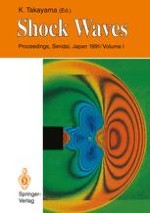1992 | OriginalPaper | Buchkapitel
A method to reduce the pressure wave intensity caused by a shock wave radiated from a duct
verfasst von : K. Wakai, K. Yamada, S. Shimizu, T. Matsukawa
Erschienen in: Shock Waves
Verlag: Springer Berlin Heidelberg
Enthalten in: Professional Book Archive
Aktivieren Sie unsere intelligente Suche, um passende Fachinhalte oder Patente zu finden.
Wählen Sie Textabschnitte aus um mit Künstlicher Intelligenz passenden Patente zu finden. powered by
Markieren Sie Textabschnitte, um KI-gestützt weitere passende Inhalte zu finden. powered by
Modern trains, such as the Shinkansen (Superexpress train in Japan) or TGV (France), pass through long tunnels at such high speed that a pressure or weak shock wave generated by the nose of a train causes a huge booming sound at the exit of the tunnel. The intensity of the noise increases with the speed of train and with the length of the tunnel. This noise is becoming to be one of the bottlenecks to increase the capacity of transportation. This report deals with a method to control a shock wave traveling in a rectangular duct to simulate a tunnel. A density gradient decreasing from the bottom wall of the tunnel toward the top, is created in the gas just before the exit of the duct so that the direction of shock wave propagation will be bent toward the bottom where the density is the highest. The behavior of the pressure wave is investigated by both computer simulation and experiments using a model duct, and a simple method is tried for absorbing the higher pressure wave at the bottom surface of the model duct.
